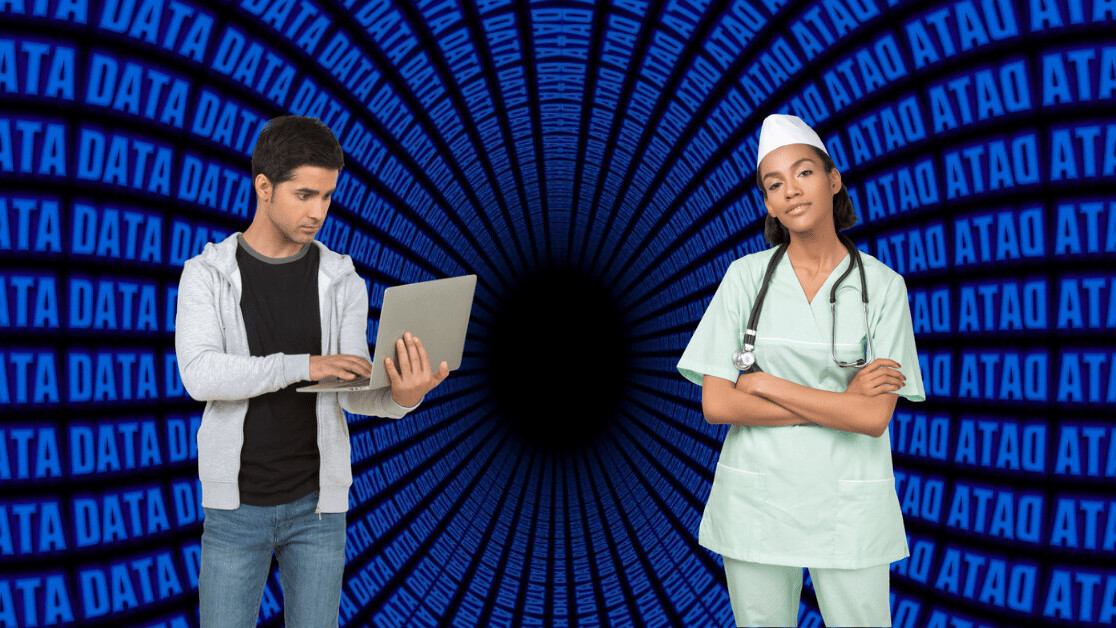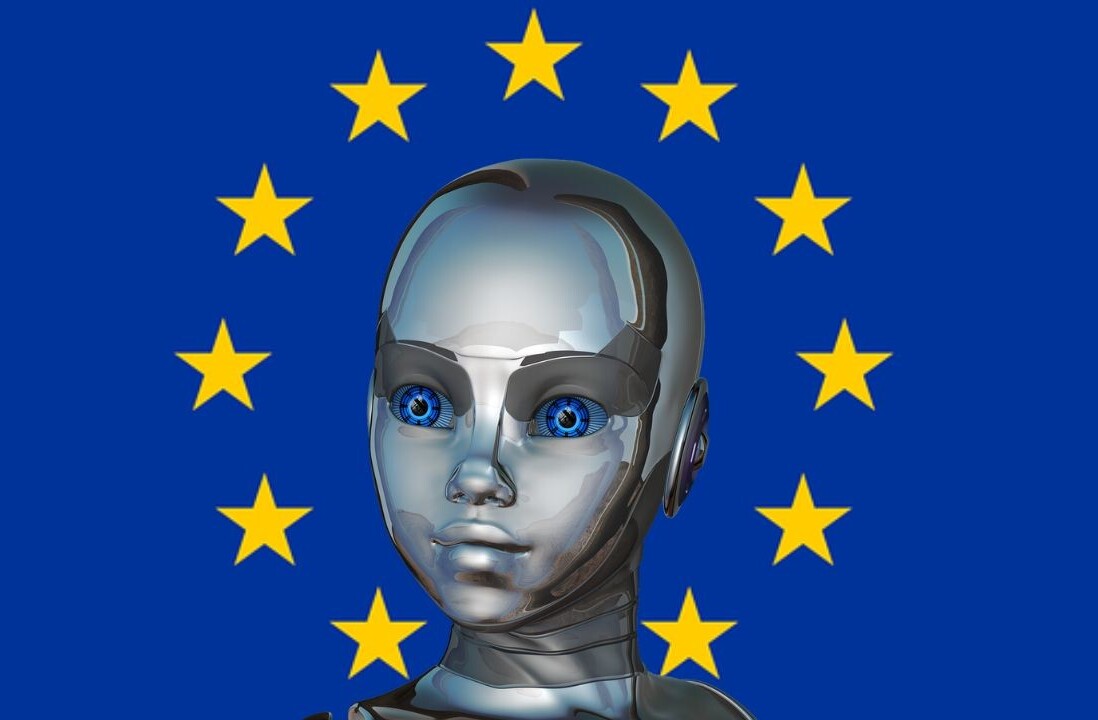With the demand for tech skills continuously growing across the board, there’s no shortage of new domains where software developers can look for new careers. Perhaps one of the most exciting — and critical — industries where developers can look to expand their horizons is the healthcare sector. The coronavirus pandemic has put serious strain on medical and healthcare infrastructures across the globe and has shown us just how much space there is for innovation in the field.
From old-school web and mobile apps to blockchain, AI, and AR/VR, healthcare organizations are exploring new applications that can improve patient care and experience, reduce costs, discover new treatments, and more.
Here are eight developer roles that are in high demand in healthcare.
Data scientists and machine learning engineers
Some of the most exciting developments in medicine and healthcare have been expedited thanks to advances in machine learning and data science. From cancer diagnosis to drug research and population health management, machine learning algorithms are enabling doctors and researchers to be faster and more precise in their work. And we’ve barely scratched the surface. During the Covid-19 pandemic, data scientists and machine learning experts played a key role in developing tools to predict the spread of the virus, support the diagnosis of patients with coronavirus symptoms, and take crowd temperatures in public areas.
The demand for machine learning and data science talent in healthcare is immense, and nearly all efforts directly translate to the improvement of care for patients and reduction of costs.
“I believe that the rapid evolution of technology we are currently experiencing will shape the world of the future. This makes it an exciting time to be working in the healthcare technology field,” says Javier Olivian Bescos, Senior Scientist at Philips Image Guided Therapy (IGT).
Philips IGT aims to employ tried-and-tested machine learning structures such as convolutional neural networks (CNN) to improve workflow and clinical outcome during interventional procedures. But the application of these techniques introduces new challenges that pose strict requirements in terms of accuracy, latency, and execution time of the algorithms. “These types of problems make us, as engineers and scientists look for creative solutions. I do believe that Philips IGT is a great place to work if you are willing to surf the disruptive technological wave, with all the pleasures and challenges,” Bescos says.
Blockchain developers
Despite the many controversies surrounding blockchain and cryptocurrencies, the past few years have seen some very interesting applications emerge for distributed ledgers. Hospitals and healthcare organizations stand to benefit much from blockchain because it provides them with tools for transparent cooperation and independent ownership of data. While the industry is still in its infancy, there are many interesting blockchain applications in the works, and the need for talented blockchain developers is growing.
One of the leading players in the field is IBM, which has been developing various blockchain applications for hospitals and healthcare organizations. The company has been using blockchain in drug traceability, clinical trials, and patient data management. IBM has partnered with several major healthcare organizations including Aetna, Anthem, Health Care Service Corporation (HCSC), and PNC Bank, to develop a secure and transparent data-sharing network. As the company expands its blockchain initiatives, developers will find plenty of opportunities to work on exciting projects.
Robotics engineers
From precision surgery to remote treatment and automated patient care and smart exoskeletons that help paralyzed patients walk again, robotics is playing an increasingly important role in healthcare and medicine. In the recent coronavirus lockdown, robots cooks and nurses in hospitals helped minimize the exposure of medical staff to the disease. Robots were also used to sanitize public locations without the need for human personnel.
Applications of robotics translate to increased precision and speed, and a reduction in medical staff fatigue. More patients will be able to benefit from timely care as doctors will spend less time doing menial and exhausting tasks.
An example is Stereotaxis, a company that develops robotic systems that allow for precise navigation of minimally-invasive surgical catheters using computer-controlled magnetic fields. The technology is used for a specific type of surgery called cardiac ablation that treats heart rhythm disorders but has broader applications in endovascular surgery. Robotic control of cardiac ablation catheters allows for unprecedented surgical precision and safety. It allows physicians to perform a procedure protected from radiation and with enhanced integration of procedural information. Over 100,000 patients have been treated using Stereotaxis’ robotic technology by over 100 hospitals globally. The clinical benefits of the technology have been documented in over 350 scientific publications.
“Working in the field of robotics is intrinsically exciting as it requires broad interdisciplinary engineering expertise. Being able to work on robotic technology that cures patients and improves healthcare adds a feeling of internal gratification. It is great to be able to work on exciting challenges that address unmet medical needs,” says Nathan Kastelein, R&D engineer at Sterotaxis.
Mechatronics engineers
Mechatronics, the multidisciplinary field that combines mechanics, electronics, and computer science, has made its mark in healthcare in the past year. From smart prosthetic limbs to surgical robot assistants, there are many exciting projects that will enable mechatronics engineers to work on life-changing projects in healthcare.
One example is Azurion, Philips’ advanced image-guided therapy system with thousands of components. Azurion integrates various equipment, systems, and imaging modalities used in the interventional lab into a single solution and has become a favored platform in many hospitals.
Athina Ilioudi is a mechatronics engineer who works on Azurion. She uses mathematical computing software like Matlab and Simulink to create highly accurate simulation models during the development of Azurion’s features.
“My work focuses on the motion control design for the interventional X-ray system of the Philips Azurion product. We develop customizable tools and functionalities that enable the automation of processes such as system identification, parameter estimation, and controller design in order to ensure high robustness and performance of the system,” she says. “What I like most in my work is the process of developing a new concept or a new way of thinking about an existing problem because it involves a lot of creative thinking and innovation.”
Maikel van Eekelen, a senior design engineer who also works at Philips, helped in the development of Azurion FlexArm. “I worked on the Philips Azurion FlexArm project as part of a multi-disciplinary team,” van Eekelen says. “We co-developed with our end-users and customers to make sure the right problem was addressed and the right product was developed.”
Launched last year, FlexArm enables clinicians to image patients from every possible angle without having to move the patient or table. FlexArm can streamline complex therapies such as minimally invasive procedures possible under image guidance.
“I am very proud to say that I worked on designing a 1200kg system that has a positional accuracy of 100 microns,” van Eekelen says. “To bring this accuracy, it requires various disciplines from mechanical engineering, mechatronics to software, embedded software, and algorithm development. It requires state of the art, even cutting edge techniques and tools to accomplish.”
Virtual reality developers
Virtual reality had long been perceived as an entertainment medium. But in recent years, VR has slowly but surely moved into other domains. In medicine, VR headsets are being used in exposure therapy, such as treating post-traumatic stress disorder (PTSD) patients, and telemedicine.
VR is also playing an important role in education. There are now many companies that specialize in VR training for medical students. An example is Immertec. Immertec’s software helps medical schools and device companies train their residents and physician customers remotely through VR. Residents and training surgeons can train remotely to not only save time and resources, but also decrease the risk of potential infection. Remote trainees simply put on a VR headset and are transported into a live operating room, where they learn surgical procedures and collaborate with other surgeons in real-time. With VR becoming increasingly important in medicine and healthcare, there is a need for skilled VR developers who can take on exciting new challenges and develop new applications.
“A large part of working within the VR space is discovering new approaches to healthcare that lead to better outcomes in patient care,” says Casey Yee, a Senior Software Developer who left Mozilla to work with Immertec. “I’ve been able to explore possibilities that focus on providing results to real use cases within the healthcare field and delivering value that may not have been possible otherwise.”
Augmented reality developers
Augmented reality rose to fame with Google Glass and Pokémon Go. But since then, it has slowly found its way into professional work and has become a game-changer in many industries. Many organizations are now using AR to develop applications for their hands-on workforce: Access to information and assistance on the go can make a huge difference in speed and efficiency.
Healthcare is one domain that stands to gain a lot from augmented reality, and the applications that are emerging are indeed exciting. One example is the partnership between Philips Image Guided Therapy and Microsoft HoloLens 2, which have worked to help doctors obtain better access to information in critical environments.
During sensitive operations, such as small-incision therapies and surgeries, doctors cannot see and touch the treatment area. They rely on medical imaging technologies and monitors to guide their actions. IGT’s applications replace screens in operating rooms and enable doctors to summon the information they need on their HoloLens headsets and navigate them with voice and hand gestures. This enables surgeons to minimize distractions and maximize their focus and precision.
“Working in healthcare technology was my first choice, as there is a clear purpose that affects people’s lives,” says Thijs Elenbaas, Lead Scientist on the “AR for IGT” project at Philips. “I am energized to work on cutting edge technology where we encounter situations that nobody has encountered before. It energizes me to work with really smart people at Philips as well as collaborators such as Microsoft. It’s extremely rewarding to work on something that could revolutionize how the user interacts with our system.”
Mobile and wearables app developer
With more than 3.8 million smartphone owners across the world, there’s a push to provide all kinds of applications and services that users can carry in their pockets. Healthcare organizations are working on all kinds of mobile apps that can provide users with better access to their services.
Depending on your mobile development skills, you’ll get to work on a range of applications. Simple but important projects include developing apps for storing healthcare data and files and setting up reminders for medicine intake. More advanced apps perform complicated tasks such as developing chatbots that can provide basic health tips. Covid-19 quarantines and social distancing rules have pushed mobile apps to the forefront of remote care. Doctors are using various apps to communicate with, diagnose, and monitor patients.
The wearables industry is also making great inroads into healthcare. There are already many great health apps for smartwatches and fitness trackers, but advances in the past few years have been very remarkable. Many health organizations and healthcare insurance companies are interested in developing healthcare apps for smartwatches and fitness trackers. This will be a unique opportunity for WatchOS and Wear OS developers to work on new and exciting projects.
Software developers are always needed
“Software is eating the world,” acclaimed software engineer and entrepreneur Marc Andreessen observed in 2011. And it’s true. Today, software is everywhere, in our cars, fridges, door locks, lamps, and of course, hospitals. Unlike computers and phones, medical equipment such as medical scanners have life cycles that might span across decades, and their software needs updating and maintenance.
“We are working on modern software development techniques through model-based design, utilizing tools such as Dezyne from Verum and DSLs. By doing so, we can abstract more, which enables us to stabilize our codebase, reduce code and reduce errors,” says Hans van Wezep, senior software architect at Philips. “Besides that, we are looking into leveraging tools to aid us in software analysis, a new field in software engineering. We are encouraged to look for opportunities to introduce new technologies and different software approaches to make our work more efficient and improve quality. This makes it a very exciting and challenging work environment.”
Wezep was part of a team that helped revamp the code used in Philips’ medical scanners. The tools developed by the team automatically analyze software code to find structural bottlenecks that need to be resolved. The project has helped significantly reduce the time it takes to build new software versions for medical equipment by automating a large part of the analysis process. This has also enabled Philips’ software engineers to focus more time and energy on innovating and adding new features to their gear.
“The systems we work on have many constraints that make problem-solving more challenging. People are stimulated to think outside the box to make things better than before. It is energizing to work with enthusiastic people who are open to new challenges, learning and applying new technologies and reinventing themselves,” Wezep says about his experience working at Philips.
So why consider a transition to a developer job in healthcare? “It was not only the amazing technology that attracted me, but also the direct impact the products have on people’s lives that is not found in other fields. Especially the interventional X-Ray product is close to my heart, as I believe it saved my father’s life,” Wezep says.
Get the TNW newsletter
Get the most important tech news in your inbox each week.







